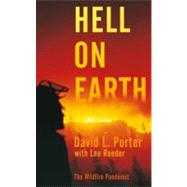
| Author's Note | p. 11 |
| Introduction | p. 15 |
| Prologue | p. 23 |
| December 2002 | p. 29 |
| An Arsonist's World | p. 35 |
| Fire Kills in Many Ways | p. 42 |
| Please, Governor | p. 49 |
| The Bridge Fire | p. 61 |
| The Honorable Ann Veneman | p. 79 |
| Langer Fire Seasons Mean More Fires | p. 84 |
| The Calm Before the Storm | p. 91 |
| Personal Stories | p. 97 |
| An Unfortunate Hunter | p. 113 |
| A Fire Season Big Enough for Texas | p. 116 |
| Simi Valley Ablaze | p. 119 |
| The Belly of the Beast | p. 133 |
| "One of Our Own ..." | p. 149 |
| A Letter from the Rucker Family | p. 160 |
| No End in Sight | p. 163 |
| A Turn in the Weather | p. 177 |
| The Mountain Fires | p. 181 |
| Without a Chance | p. 187 |
| Victims Remembered | p. 194 |
| The Fires Wind Down | p. 197 |
| Hell Continued | p. 205 |
| Disaster Begets More Disaster | p. 213 |
| Does Fire Beget More Warming? | p. 217 |
| Global Warming? | p. 231 |
| Less Fire, More Damage | p. 234 |
| Hell In 2007 | p. 243 |
| Epilogue | p. 253 |
| Acknowledgments | p. 259 |
| An Anatomy of What Occurred | p. 261 |
| Notes | p. 267 |
| Glossary | p. 269 |
| Index | p. 281 |
| Table of Contents provided by Ingram. All Rights Reserved. |
The New copy of this book will include any supplemental materials advertised. Please check the title of the book to determine if it should include any access cards, study guides, lab manuals, CDs, etc.
The Used, Rental and eBook copies of this book are not guaranteed to include any supplemental materials. Typically, only the book itself is included. This is true even if the title states it includes any access cards, study guides, lab manuals, CDs, etc.